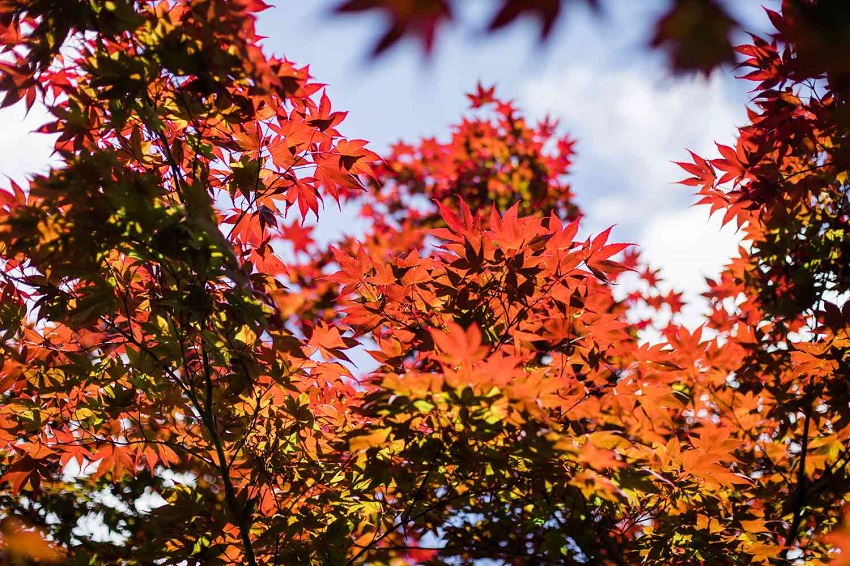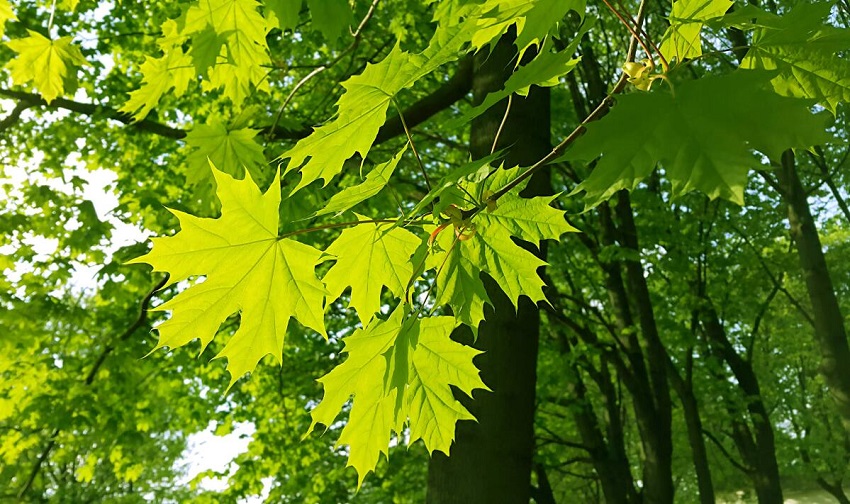
When it comes to ornamental trees, few can match the stunning beauty of the Japanese maple. With its delicate leaves and vibrant colors, it adds a touch of elegance to any garden or landscape. One of the most sought-after characteristics of the Japanese maple is its red foliage. However, it’s not uncommon for some Japanese maple trees to display more green than red in their leaves. In this article, we will explore the reasons behind this phenomenon and provide insights into how you can enhance the red coloration of your Japanese maple.
Understanding Japanese Maple Varieties
When comparing red maple vs japanese maple, it’s important to note that Japanese maples come in various cultivars, each with its unique traits and characteristics. Some cultivars are known for their intense red foliage, while others exhibit more green hues. It’s crucial to understand that the natural coloration of a Japanese maple is primarily determined by its genetic makeup. Different varieties have different pigmentation levels, resulting in varying degrees of redness or greenness in their leaves.
Environmental Factors
While genetics play a significant role, environmental factors also influence the coloration of Japanese maple leaves. Here are a few key factors to consider:
Sunlight
Japanese maples thrive in partially shaded areas. Excessive exposure to direct sunlight can cause the leaves to develop more green pigmentation. To enhance the red coloration, consider providing your Japanese maple with dappled sunlight or light shade throughout the day.
Soil Conditions
The acidity of the soil can affect the nutrient absorption and overall health of the tree. Japanese maples prefer slightly acidic soil with a pH range of 5.5 to 6.5. If the soil pH is too high or too low, it can impact the tree’s ability to produce vibrant red foliage. Conduct a soil test and adjust the pH levels accordingly to create an ideal environment for your Japanese maple.
Moisture Levels
Consistent moisture is vital for the health and coloration of Japanese maples. They prefer well-drained soil that retains moisture but doesn’t become waterlogged. Inadequate or excessive watering can stress the tree, leading to a diminished red coloration. Ensure you provide sufficient water, especially during dry periods, while avoiding waterlogging the roots.
Nutrient Balance
Proper nutrition is essential for the optimal growth and coloration of Japanese maples. Pay attention to the nutrient balance in the soil, especially the levels of nitrogen, phosphorus, and potassium (N-P-K). Too much nitrogen can promote excessive green growth at the expense of red coloration. Consider using a balanced fertilizer formulated specifically for Japanese maples to provide the necessary nutrients in the correct proportions.
Pruning and Maintenance
Regular pruning and maintenance practices can influence the coloration of Japanese maples. Pruning helps to shape the tree and promote healthy growth. By removing overcrowded branches and improving air circulation, you create an environment that encourages vibrant leaf coloration. Additionally, removing dead or diseased branches ensures that the tree allocates resources to the healthy parts, enhancing its overall appearance.
Protecting Against Pest and Disease
Pests and diseases can weaken Japanese maples, impacting their coloration and overall health. Common pests that affect these trees include aphids, scale insects, and caterpillars. Regular inspection and prompt treatment of any infestations can help maintain the tree’s vigor and coloration. Similarly, diseases such as powdery mildew or root rot can hinder the tree’s ability to produce vibrant red leaves. Proper sanitation, adequate air circulation, and appropriate fungicidal treatments can mitigate these issues.
Enhancing Red Coloration
If you desire a more pronounced red coloration in your Japanese maple, there are a few additional steps you can take:
Selecting Red-Leafed Varieties
When choosing a Japanese maple tree for its red foliage, opt for varieties known for their vibrant red coloration. Some popular cultivars include Acer palmatum ‘Bloodgood,’ Acer palmatum ‘Emperor I,’ and Acer palmatum ‘Fireglow.’ These varieties have been specifically bred for their intense red hues and are more likely to display the desired coloration.
Adjusting Light Exposure
While Japanese maples thrive in partial shade, you can manipulate light exposure to enhance the red coloration. Consider strategically placing the tree in a location that receives dappled sunlight or light shade throughout the day. This allows the leaves to develop their characteristic red pigmentation while still receiving adequate light for photosynthesis.
Implementing Leaf Coloration Techniques
Certain horticultural techniques can further intensify the red coloration of Japanese maple leaves. One such method is leaf pinching, which involves removing the tip of new growth during the spring season. This stimulates the tree to produce additional lateral buds, resulting in more compact growth and increased coloration. Leaf pinching should be done carefully and sparingly to avoid stressing the tree.
Seasonal Changes
It’s essential to note that the red coloration of Japanese maples can vary throughout the year. During spring, new leaves often emerge with a bright red hue, gradually transitioning to a deeper green as the season progresses. However, during the fall season, the leaves undergo another color transformation, displaying brilliant shades of red, orange, and yellow. The intensity of the fall coloration can be influenced by the factors mentioned earlier, such as sunlight, soil conditions, and overall tree health.
Conclusion
Japanese maples are renowned for their captivating beauty, and the variation in leaf coloration adds to their charm. While some Japanese maple trees may display more green than red in their leaves, there are several factors that can influence and enhance the desired red coloration. By understanding the role of genetics, environmental conditions, nutrition, and proper maintenance practices, you can create an environment conducive to vibrant red foliage. Remember to select red-leafed varieties, provide appropriate light exposure, and implement leaf coloration techniques if desired. With careful attention and care, you can enjoy the stunning red hues of your Japanese maple and create a visually captivating landscape.

